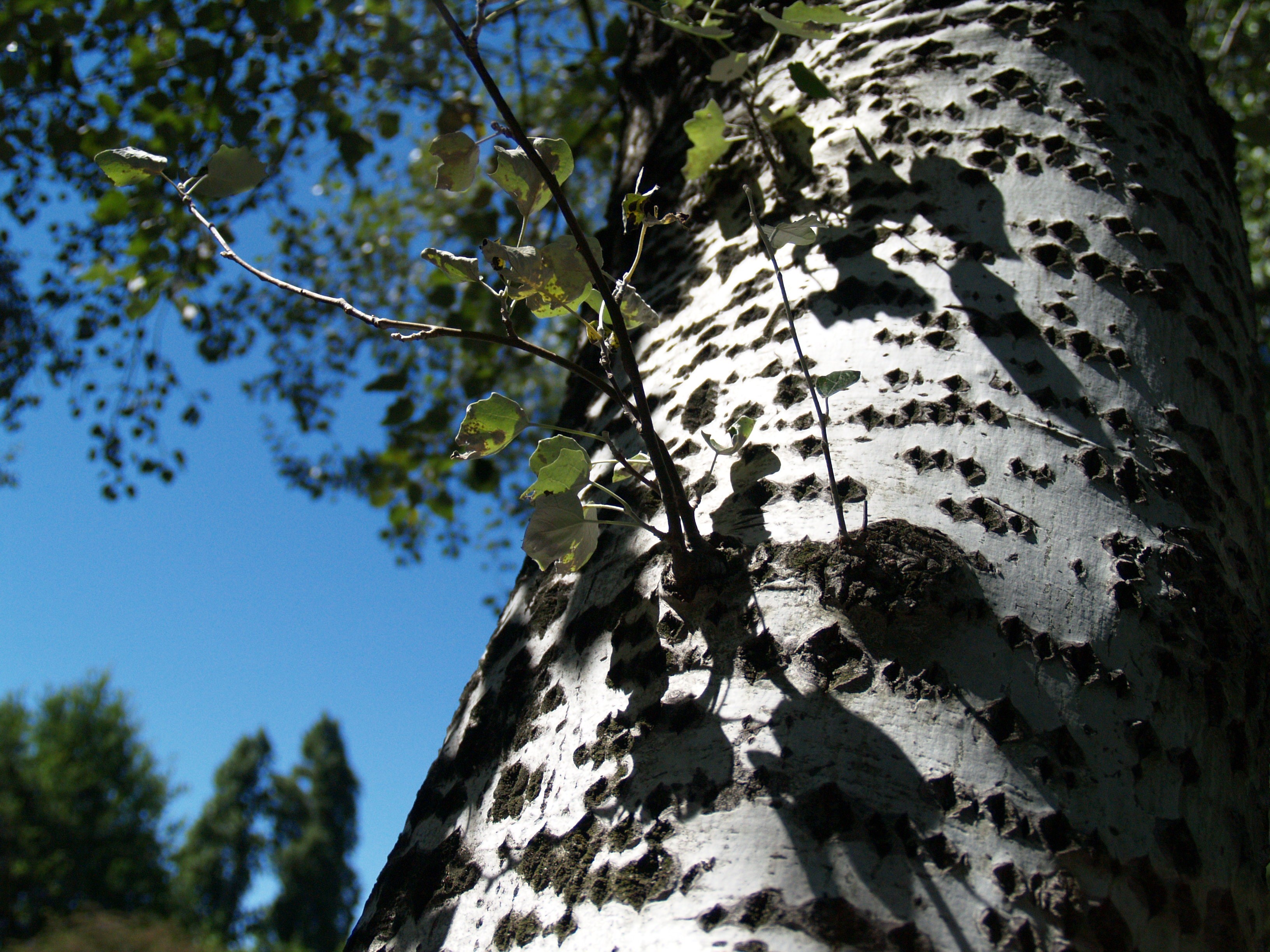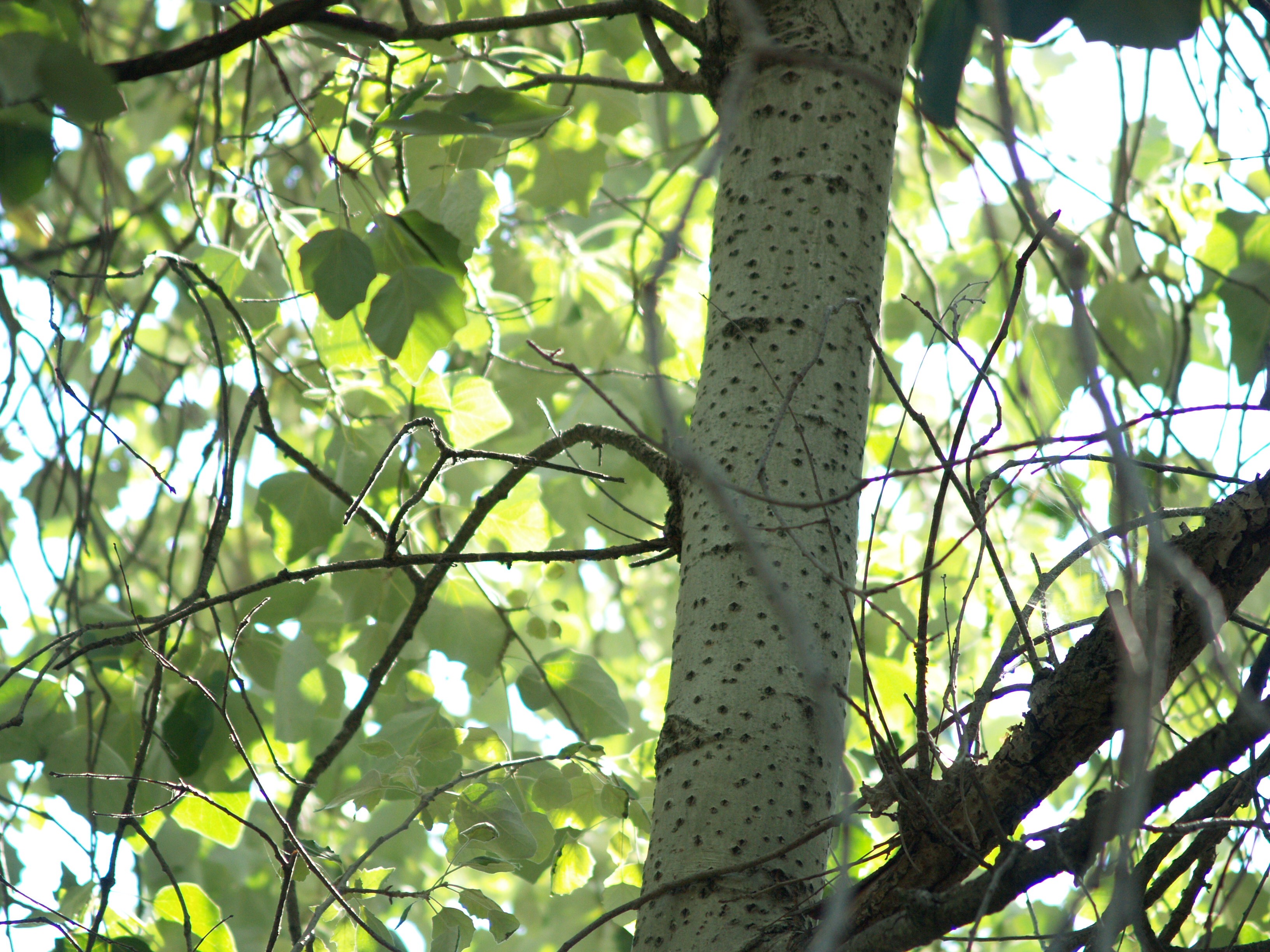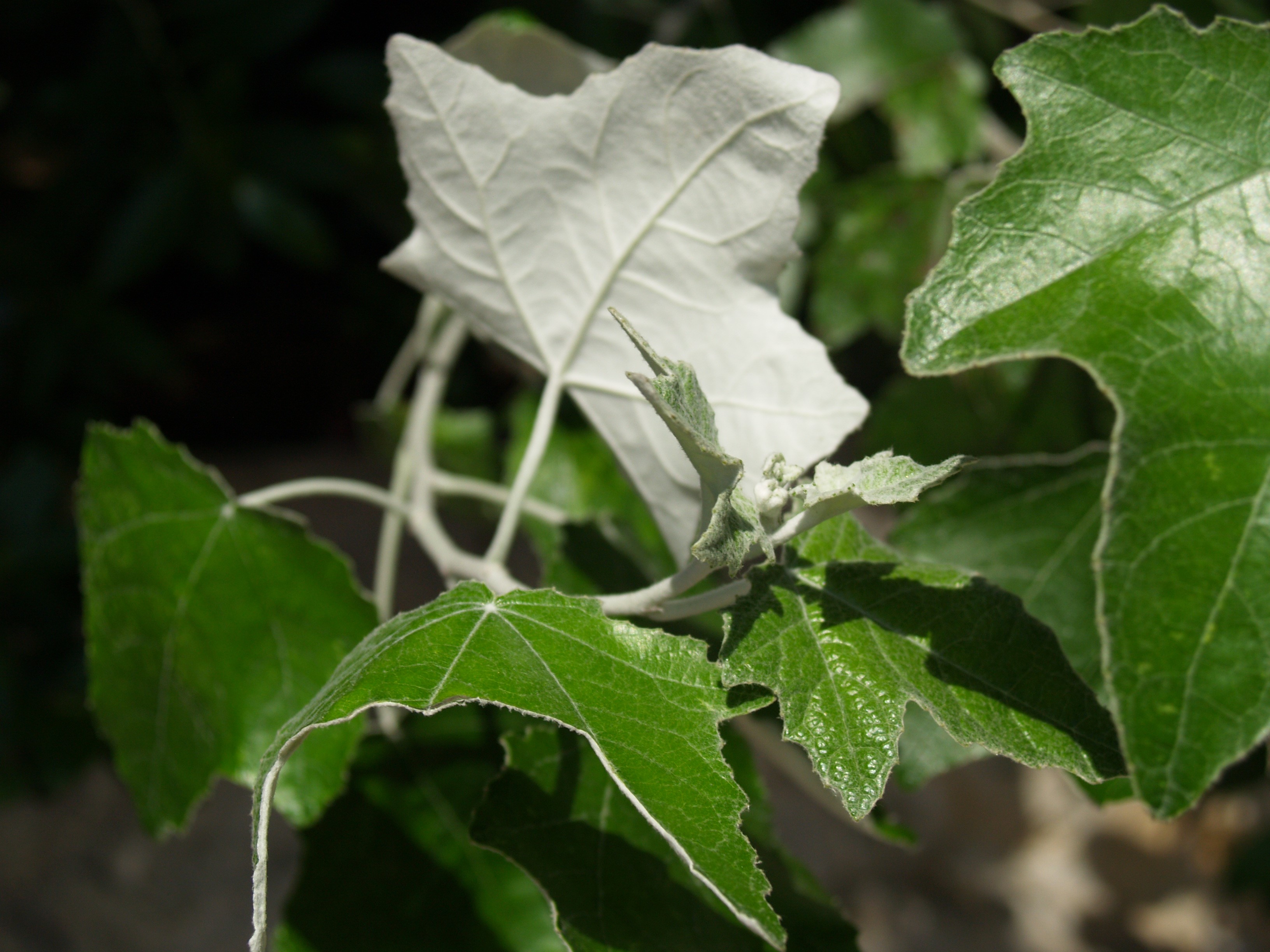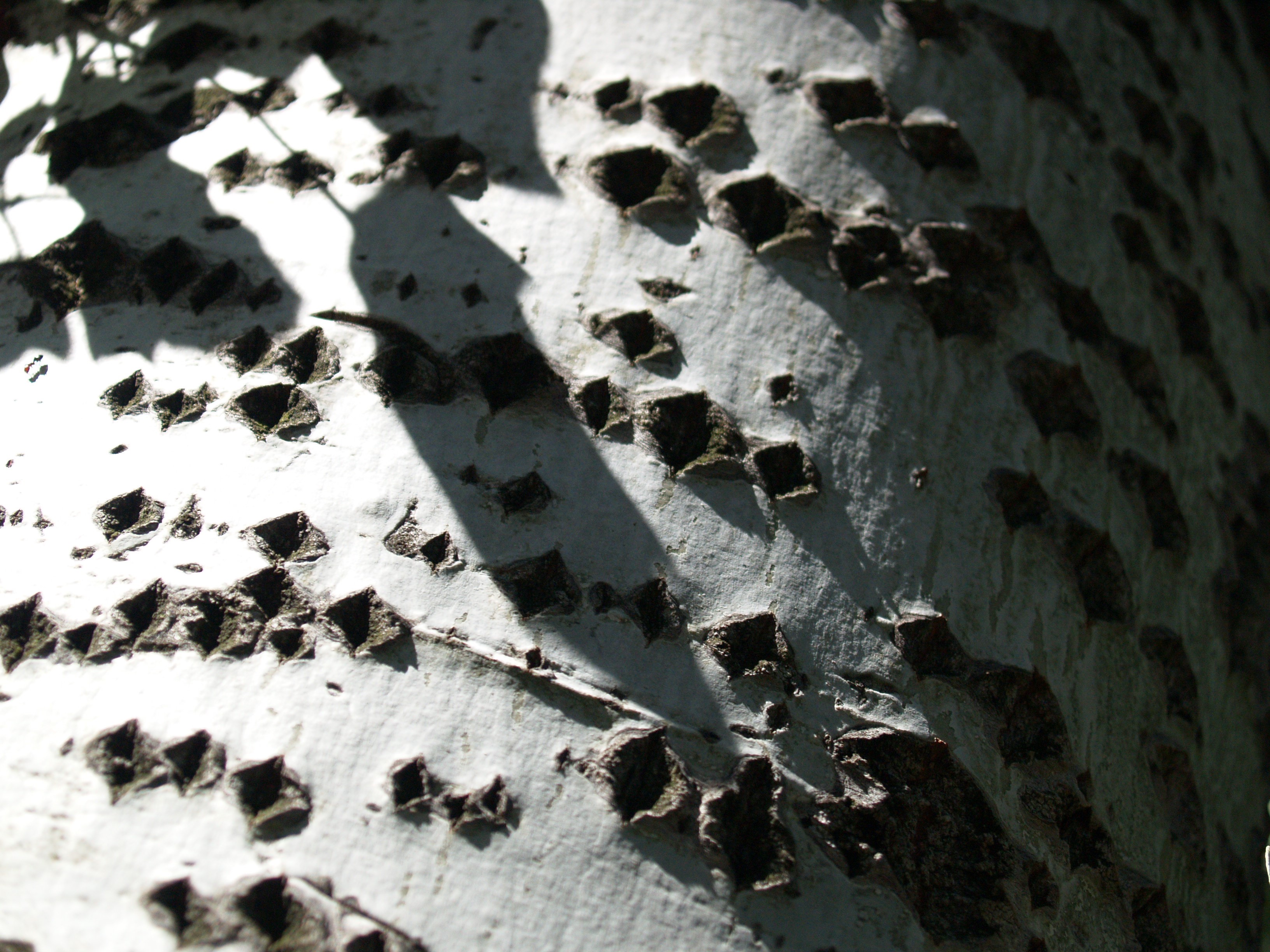
White Poplar
Populus alba
Family and description
From the Salicaceae family, the white poplar is a deciduous, fast-growing tree that can reach a height of 25 m.
Its bark is white with diamond-shaped brown cracks that become more numerous as the tree ages.
The leaves, of 5 unequal lobes, are green on the upper surface and with white scurfy on the lower surface, with a long petiole. Younger leaves also have a covering of white scurfy on the top page.
Flowering occurs in early spring, when the leaves are yet to come. It is a dioecious species, with male and female catkins on separate trees. The male catkins are grey, with conspicuous dark red stamens which are larger than the flowers. Stamens and anthers are red when they appear, turning yellow. The female catkins, maturing in late spring to early summer, release tufts of white fur that spread through the air creating a surprising effect.
Origin and habitat
It is native to Central and Southern Europe, East Asia and the Far North of Africa, having been introduced in many other regions of the world. In Portugal it grows all over the territory, especially associated with rivers and wet areas.
It is a species that can grow in all types of soils, requiring permanent moisture and plenty sunlight. It often appears accompanied by willows, tamarisk and alders, among others. It does not tolerate intense and long cold winters.
Uses and curiosities
This species tends to propagate by means of root suckers growing from the lateral roots, forming new plants sometimes at a distance of 20 to 30 m from the trunk.
The white poplar hybridises easily with other poplar species, namely the Populus tremula, giving rise to a hybrid known as the Gray poplar with intermediate morphological characteristics in relation to its progenitors.


